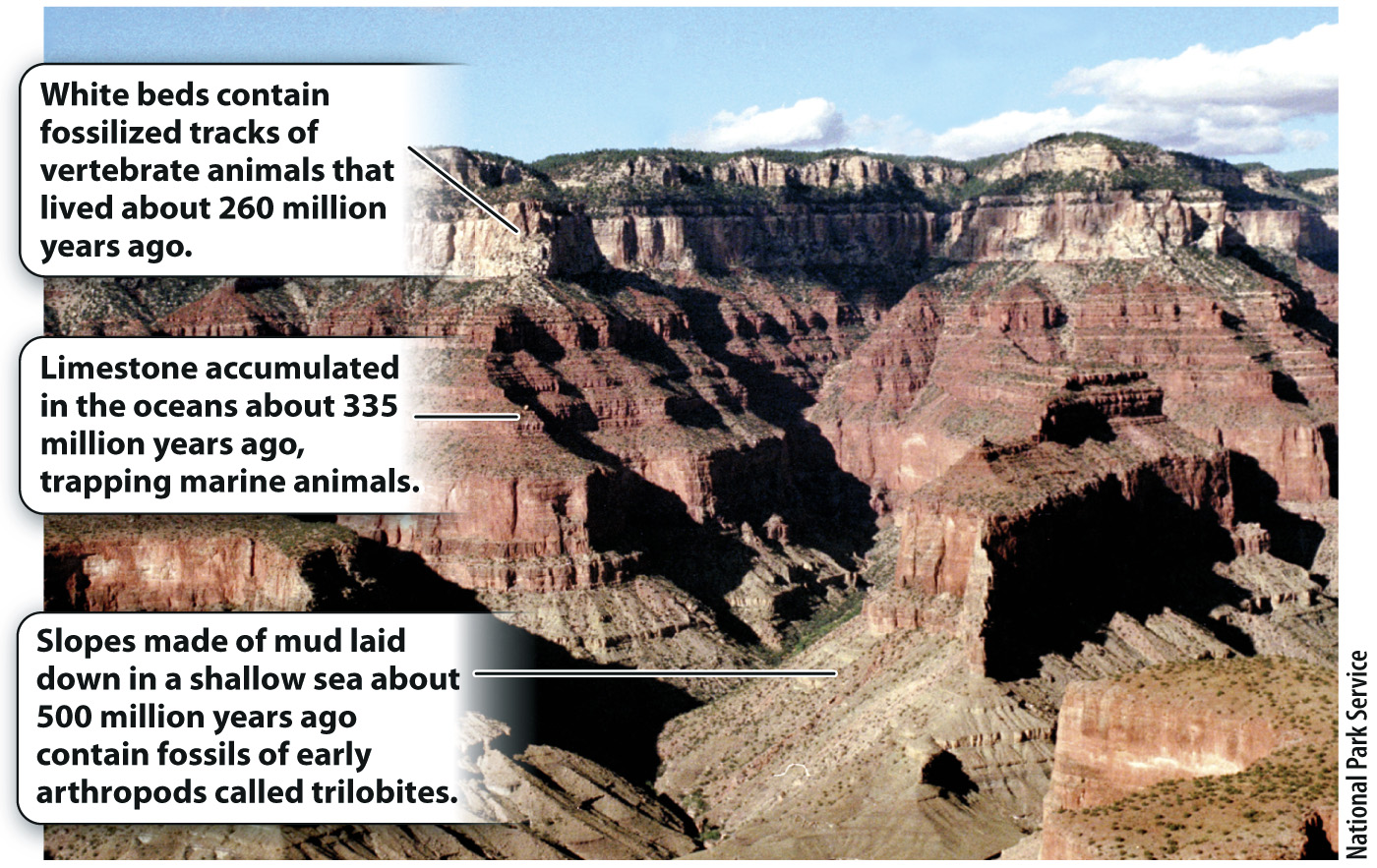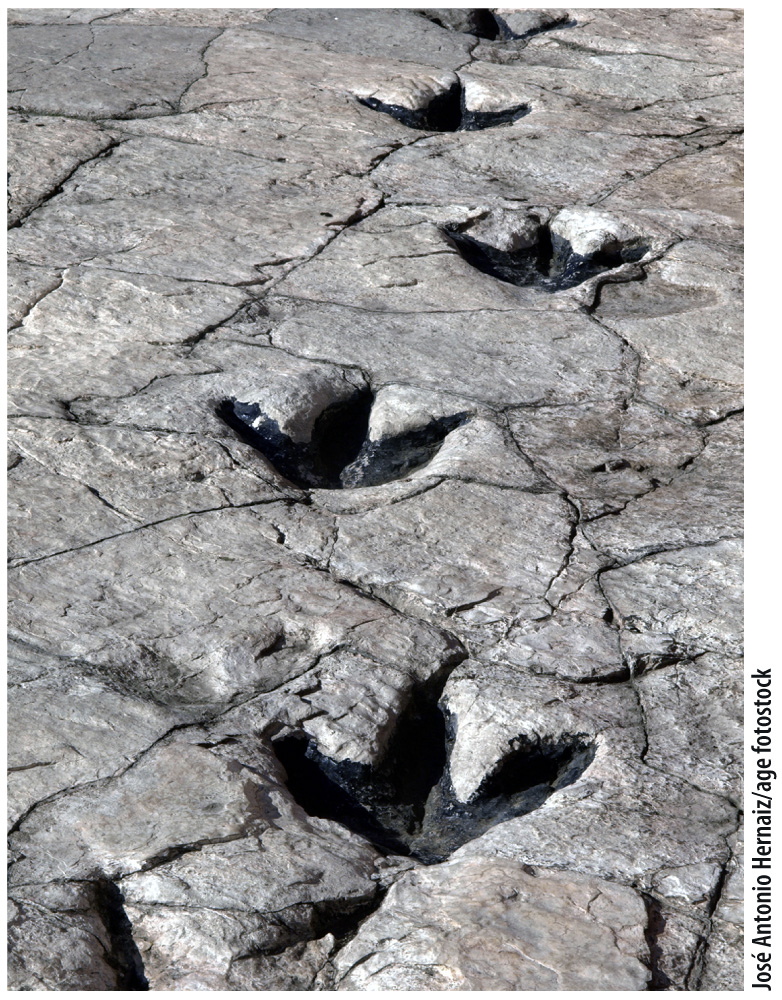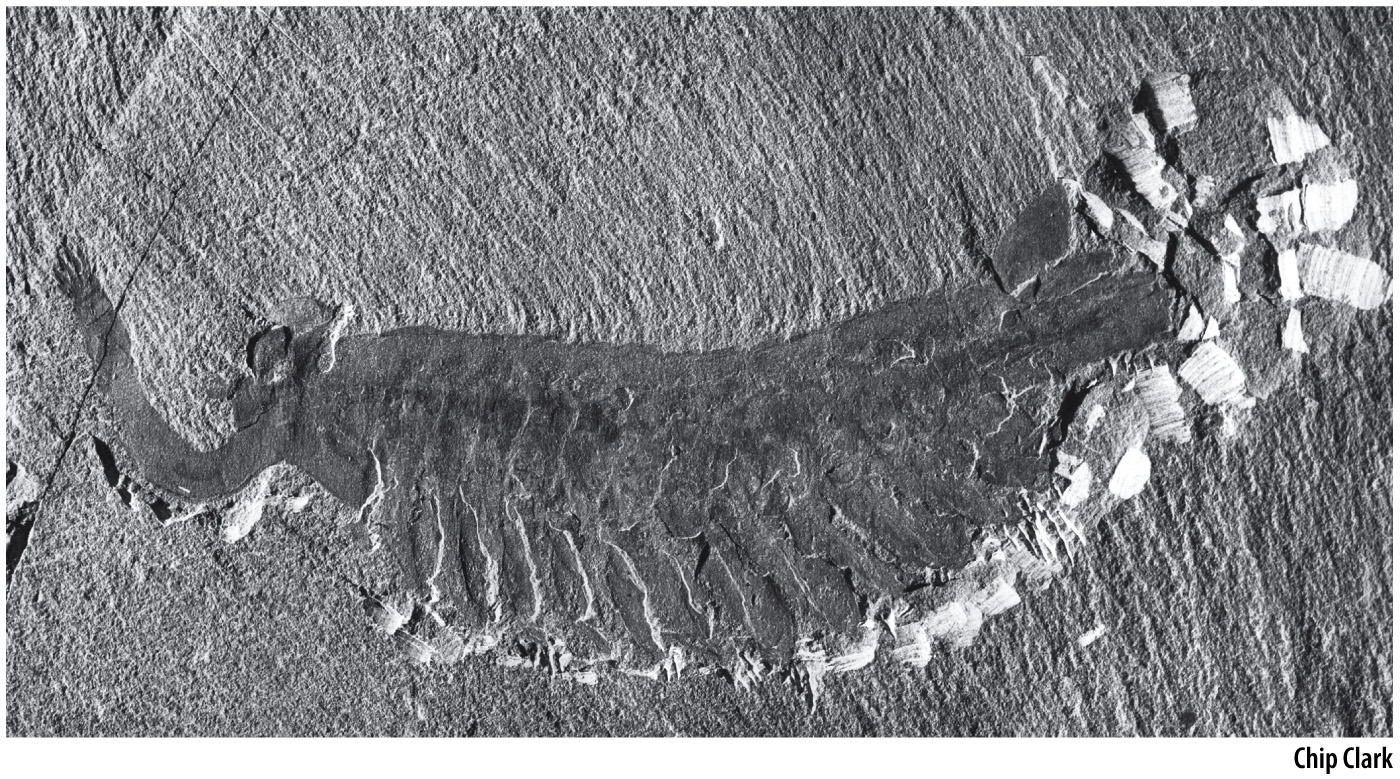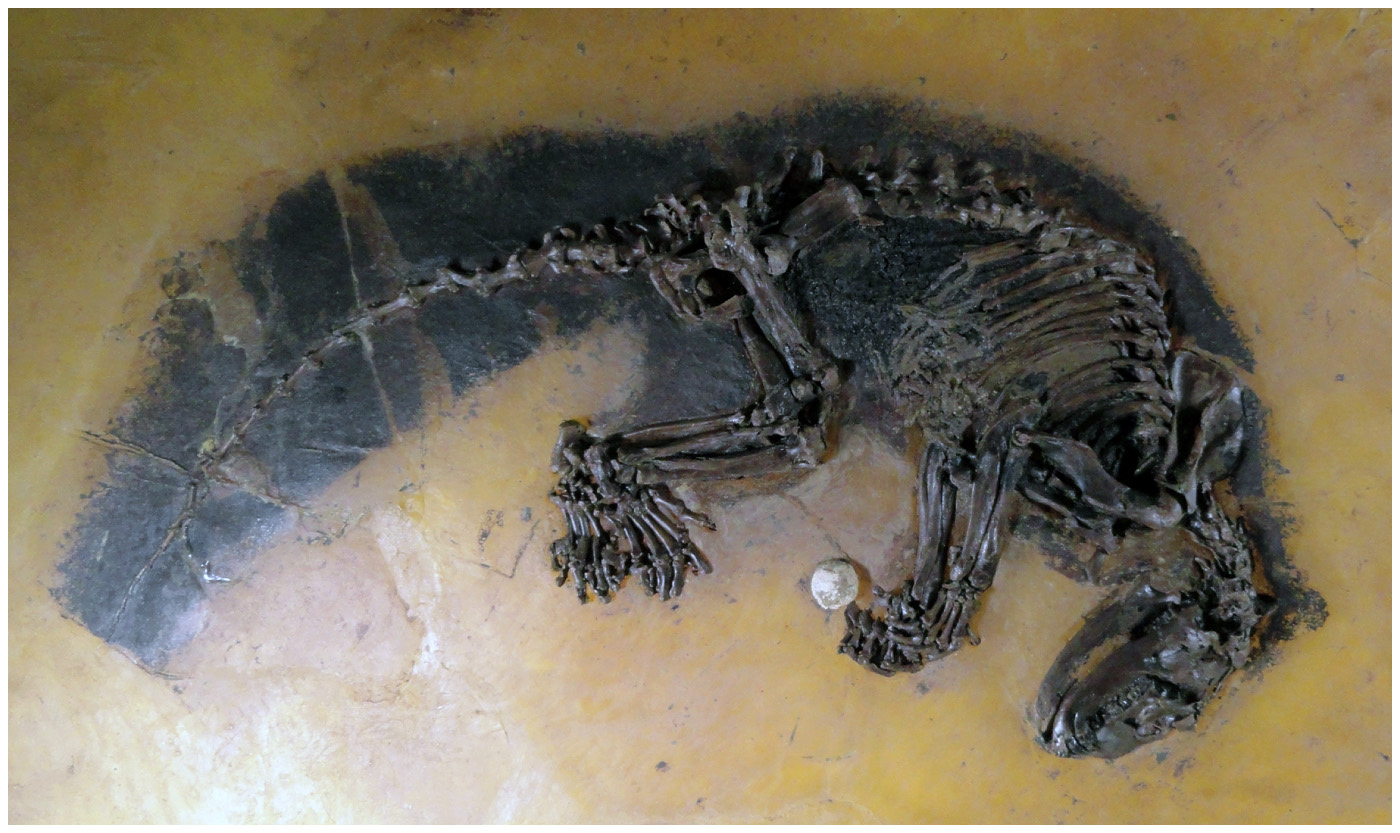Fossils provide a selective record of past life.
Fossils are the remains of once-
For all its merits, the fossil record should not be thought of as a complete dictionary of everything that ever walked, crawled, or swam across our planet’s surface. Fossilization requires burial, as when a clam dies on the seafloor and is quickly covered by sand, or a leaf falls to the forest floor and ensuing floods cover it in mud. Through time, accumulating sediments harden into sedimentary rocks such as those exposed so dramatically in the walls of the Grand Canyon (Fig. 23.12). If they are not buried, the remains of organisms are eventually recycled by biological and physical processes, and no fossil forms. In general, the fossil record of marine life is more completely sampled than that for land-

Biological factors contribute to the incompleteness of the fossil record. Most fossils preserve the hard parts of organisms, those features that resist decay after death. For animals, this usually means mineralized skeletons. Clams and snails that secrete shells of calcium carbonate have excellent fossil records. More than 80% of the clam species found today along California’s coast also occur as fossils in sediments deposited during the past million years. In contrast, nematodes, tiny worms that may be the most abundant animals on Earth, have no mineralized skeletons and almost no fossil record. The wood and pollen of plants, which are made in part of decay-

Together, then, the properties of organisms (do they make skeletons or other features that resist decay after death?) and environment (did the organisms live in a place where burial was likely?) determine the probability that an ancient species will be represented in the fossil record. Fortunately, for species that make mineralized skeletons and live on the shallow seafloor, the fossil record is very good, preserving a detailed history of evolution through time.
Organisms that lack hard parts can leave a fossil record in two other distinctive ways. Many animals leave tracks and trails as they move about or burrow into sediments. These trace fossils, from dinosaur tracks to the feeding trails of snails and trilobites, preserve a record of both anatomy and behavior (Fig. 23.13).
Organisms can also contribute molecular fossils to the rocks. Most biomolecules decay quickly after death. Proteins and DNA, for example, generally break down before they can be preserved, although, remarkably, a sizable fraction of the Neanderthal genome has been pieced together from DNA in 40,000-
Rarely, unusual conditions preserve fossils of unexpected quality, including animals without shells, delicate flowers or mushrooms, fragile seaweeds or bacteria, even the embryos of plants and animals. For example, 505 million years ago, during the Cambrian Period, a sedimentary rock formation called the Burgess Shale accumulated on a relatively deep seafloor covering what is now British Columbia. Waters just above the basin floor contained little or no oxygen, so that when mud swept into the basin, entombed animals were sealed off from scavengers, disruptive burrowing activity, and even bacterial decay. For this reason, Burgess rocks preserve a remarkable sampling of marine life during the initial diversification of animals (Fig. 23.14).

The Messel Shale formed more recently—

In general, the fossil record preserves some aspects of biological history well and others poorly. Fossils provide a good sense of how the forms, functions, and diversity of skeletonized animals have changed over the past 500 million years. The same is true for land plants and unicellular organisms that form mineralized skeletons. These fossils shed light on major patterns of morphological evolution and diversity change through time; their geographic distributions record the movements of continents over millions of years; and the radiations and extinctions they document show how life responds to environmental change, both gradual and catastrophic.